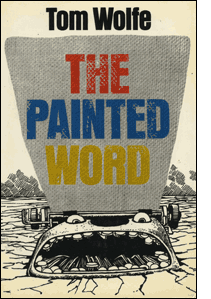 So said a billboard along the road as you were driving today. No explanatory picture. No company name giving a clue as to the purpose of the ad...still I told you I'd throw it into the blog.) So I looked up tangelo.
So said a billboard along the road as you were driving today. No explanatory picture. No company name giving a clue as to the purpose of the ad...still I told you I'd throw it into the blog.) So I looked up tangelo.Etymology: tangerine + pomelo: the fruit of a hybrid (Citrus tangelo) between a tangerine or mandarin orange and a grapefruit; also : the tree
I'm still clueless. What's there for a clown to hate so much about this fruit that it begs advertising along the roadways in the Carolinas?
My best guess is that modern-art artists are moving into advertising. Why should we need to advertise a product, for God's sake? Why can't we just advertise for the sake of the ad itself? And who needs an advertisement to be clever and beg your respect for the ad man who created it? Oh, I know this is silly, but you see it smacks too much of the excerpt I read from this book today...the one about the "purpose" of modern art. I got it on a link on Bill Emory's web page.
"...but everybody shared the same premise: henceforth, one doesn't paint about anything, my dear aunt, to borrow a line from a famous Punch cartoon. One just paints. Art should no longer be a mirror held up to man or nature. A painting should compel the viewer to see it for what it is: a certain arrangement of colors and forms on a canvas. The painter thinks in forms and colors. The aim is not to reconstitute an anecdotal fact but to constitute a pictorial fact.'...As the Minimal Art movement came into its own in 1966, Frank Stella was saying it again:
'My painting is based on the fact that only what can be seen there is there. It really is an object... What you see is what you see.' "
(Which explains why this mindset evolved to the point that works done by elephants and gorillas get attention equivalent to human endeavors in today's art world. Well, maybe I exaggeraterate a little.)
And should we daaare to allow art to return to its metaphoric roots, its days of being a tool through which the artist expressed something in his soul that could not be silent...the response from the world of critics is: "Return to philistinism . . .triumph of mediocrity . . . a visual soap opera . . . The kind of academic realism Estes practices might well have won him a plaque from the National Academy of Design in 1890 . . .incredibly dead paintings [I find this word choice ironic] . . .rat-trap compositional formulas . . . its subject matter has been taken out of its social context and neutered . . . it subjects art itself to ignominy . . . all quotes taken from reviews of Estes show in New York last year. . . and a still more fascinating note is struck: This is the moment of the triumph of mediocrity; the views of the silent majority prevail in the galleries as at the polls."
Art for art's sake, indeed. As I consider it, I must admit I am like you, honey. I agree that I need something more than a reproduction of what I might see floating inside my eyelids during a migraine. I turn the radio on and actually get intentional about finding a station. 'Oh, listen to the lovely white noise. Isn't it wonderful to listen to something just because it is there?' Not interested. So shoot me!
What makes me want to view art is in part to to admire this: that it is the creation of a mind/heart/eye/hand that has poured blood/ sweat/tears/painstakingly developed skills into making something that I couldn't even begin to duplicate. Maybe not even imagine. THAT is what I want to see. And in this I guess we're not alone. The almighty dollar is now serving in the role of the child who points out that the emperor is naked in this particular "emperor's new clothes" tale. (Oops, I'm being representational. Faux pas alert.) Apparently, the return to realism that has received such a Spanish-Inquisition reception from the "modern school orthodoxy" is nevertheless, selling. "Somehow a style to which they have given no support at all lacks "a persuasive theory" is selling. The New York galleries fairly groan at the moment under the weight of one sort of realism or another. . . the incredible prices . . . Estes is reported to be selling at $80,000 a crack . . . Bechtle for 20,000 pounds at auction in London. . . Can this sort of madness really continue in 'an intellectual void'?"
My personal opinion is that Wolf speculates rightly that the day will come when "...Every art student will marvel over the fact that a whole generation of artists devoted their careers to getting the Word (and to internalizing it) and to the extraordinary task of divesting themselves of whatever there was in their imagination and technical ability that did not fit the Word. They will listen to art historians say, with the sort of smile now reserved for the study of Phrygian astrology: Thats how it was then! as they describe how, on the one hand, the scientists of the mid-twentieth century proceeded by building upon the discoveries of their predecessors and thereby lit up the sky . . . while the artists proceeded by averting their eyes from whatever their predecessors, from da Vinci on, had discovered, shrinking from it, terrified, or disintegrating it with the universal solvent of the Word."
(The Word being, basically one artist's previous quote: What you see is what you see. There is no deeper meaning.) I think I might enjoy reading this book.
So I have this idea. We need to embrace this era before it becomes completely passe, my love. Let's go out for a day of fine art. First, we'll sweep into an elegant hall for a concert of the music of John Cage. We'll sit through 433 , a piece that is simply 4 minutes and 33 seconds of silence. (Unless we get lucky and there are "random environmental sounds." And if I know you, you'll make some.) Then after intermission, we'll return for Imaginary Landscape No. 4 which, of course, calls for 12 randomly tuned radios to play "sound" for us. (Maybe we'll hit it lucky and one of the radios will play something we want to hear...that is if we can hear it through the other 11 radios. ) After the concert, we can stroll across the street to a beautiful gallery to look at a big red dot. Or maybe a few stripes. Art for art's sake, you know. One of us will point at something on the wall. We can then say one of the two things, because we absolutely want to maintain the integrity of the era. We can say:
1) that's a nice color, or
2) that's an interesting shape.
And then the other one of us will nod knowingly, and we will move on because this is fun. It gives untalented bumpkins like us great pride knowing we could have done any of these things. Heck, we did better in the domain of creative work simply by dressing in a coordinating outfit. (OK, I know, you don't like to wear coordinating outfits; but that's political, not artistic, sweety.)
Then again, I don't really need the ego-stroking. Do you? Let's just settle for an evening at a movie, one with a John Williams score.

No comments:
Post a Comment